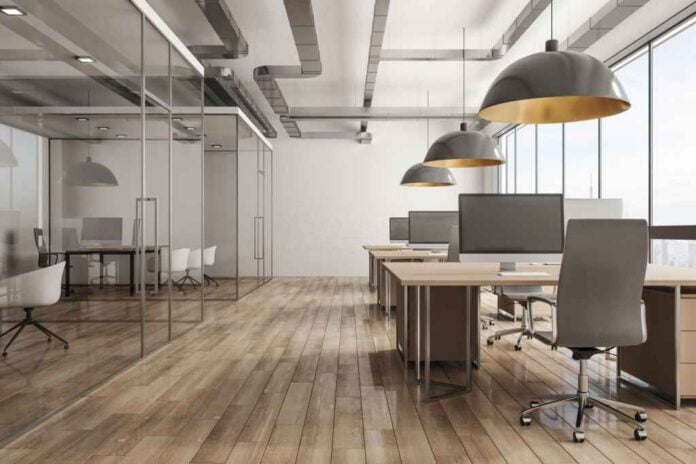Office furniture plays a significant role in shaping the work environment and influencing employee well-being. The design, layout, and ergonomics of office furniture can profoundly impact employee productivity, satisfaction, and overall well-being.
This article will explore the psychology behind office furniture and how to design a workspace that promotes employee well-being.
Understanding the Impact of Office Furniture:
Office furniture is more than just functional pieces in a workspace. It can shape the atmosphere, mood, and productivity levels of employees. Furniture’s design, color, comfort, and functionality can impact cognitive performance, philosophy, and physical well-being. By understanding the psychological aspects of office furniture, employers can create a conducive environment for employees to thrive.
Ergonomics for Physical Comfort:
Ergonomics is a crucial aspect of office furniture design. Ergonomically designed furniture promotes physical comfort and reduces the risk of musculoskeletal disorders. Ergonomic chairs with adjustable features, lumbar support, and proper seat height can help employees maintain good posture and reduce the strain on their bodies. Height-adjustable desks allow employees to switch between sitting and standing positions, promoting movement and reducing the negative effects of prolonged sitting.
Color Psychology in Office Furniture:
Colors significantly impact human psychology and can influence mood, productivity, and creativity. When selecting office furniture, consider the psychology of colors. Blue promotes calmness and concentration, while green is associated with balance and harmony. Yellow can enhance creativity and energy levels, while neutral tones provide a sense of stability. Incorporate a combination of colors that align with your company culture and desired atmosphere.
Creating a Sense of Ownership:
Employees often spend a significant amount of time in their workspaces. You can create a sense of ownership and psychological comfort by allowing them to personalize their workspace. Provide employees with the flexibility to decorate their desks with personal items, plants, or artwork. This personal touch fosters a connection to the space and enhances employee satisfaction and well-being.
The Influence of Office Layout:
The office furniture layout can impact employee interactions, collaboration, and productivity. Open designs with shared workstations encourage cooperation and communication, while individual cubicles provide privacy and focus. Consider the nature of your work and the desired level of interaction when determining the layout. Incorporate comfortable and inviting breakout areas or lounge spaces to encourage informal meetings and relaxation.
Natural Elements for Psychological Well-Being:
Integrating natural elements into the office environment can positively impact employee well-being. Incorporate plants, natural light, and organic materials in office furniture design. Plants improve air quality and create a calming and biophilic environment. Natural light promotes circadian rhythms, reduces eye strain, and enhances mood. Choose furniture made from sustainable materials, such as wood or bamboo, to create a connection with nature and reduce the environmental footprint.
Noise Reduction and Privacy:
Noise levels and privacy can significantly affect employee well-being and productivity. Office furniture can play a role in addressing these concerns. Consider incorporating sound-absorbing materials like acoustic panels or partitions to reduce noise distractions and create privacy. Design private or quiet areas where employees can focus or have confidential conversations. Providing employees with the option to control their environment empowers them and enhances their psychological comfort.
Flexible Spaces for Adaptability:
The modern workforce requires adaptability and flexibility. Office furniture should accommodate changing needs and tasks. Incorporate modular, flexible furniture that can be easily reconfigured to suit different activities and team sizes. Adjustable partitions, movable furniture, and versatile workstations empower employees to customize their environment, fostering a sense of autonomy and adaptability.
Employee Well-Being and Breakout Areas:
Employee well-being extends beyond the workstation. Design comfortable breakout areas or relaxation spaces where employees can recharge and take mental breaks. Include comfortable seating, natural light, and calming elements to promote relaxation and reduce stress. These areas serve as a retreat from work demands and contribute to overall employee well-being and satisfaction.
Ongoing Evaluation and Feedback:
Designing an office space that prioritizes employee well-being is an ongoing process. Continuously evaluate the impact of office furniture on employee satisfaction, productivity, and well-being. Encourage feedback from employees and make adjustments accordingly. Regularly updating and upgrading furniture to align with evolving needs and preferences demonstrates a commitment to employee well-being.
Conclusion:
Office furniture Brisbane design goes beyond aesthetics and functionality. It influences employee well-being, satisfaction, and productivity. You can design a workspace that promotes employee well-being by incorporating ergonomic features, considering color psychology, creating a sense of ownership, and integrating natural elements. Focus on flexible layouts, privacy, and breakout areas to support adaptability and work-life balance. Regular evaluation and feedback ensure that the office furniture remains aligned with employees’ evolving needs and preferences. Remember, a well-designed workspace can positively impact employee morale, engagement, and overall organizational success.


